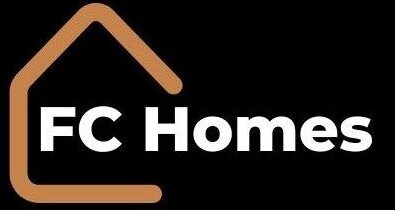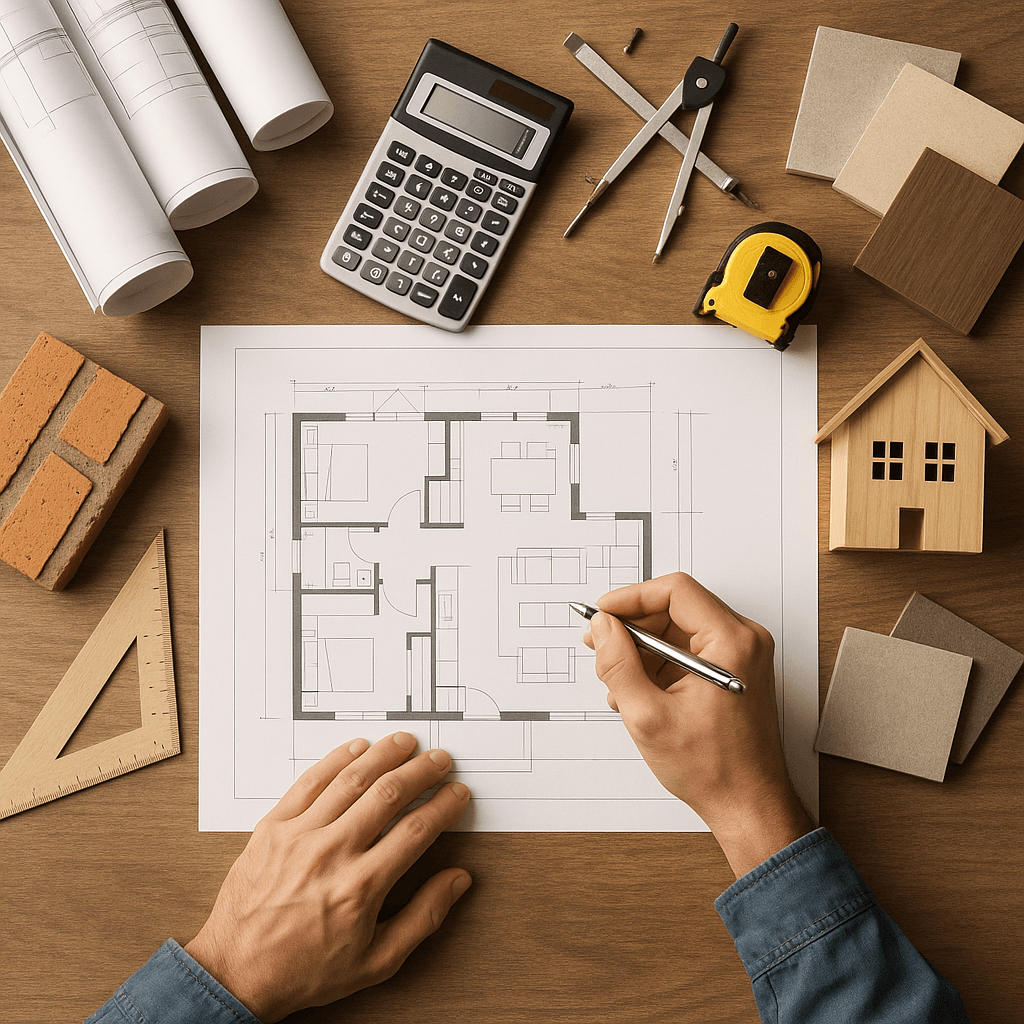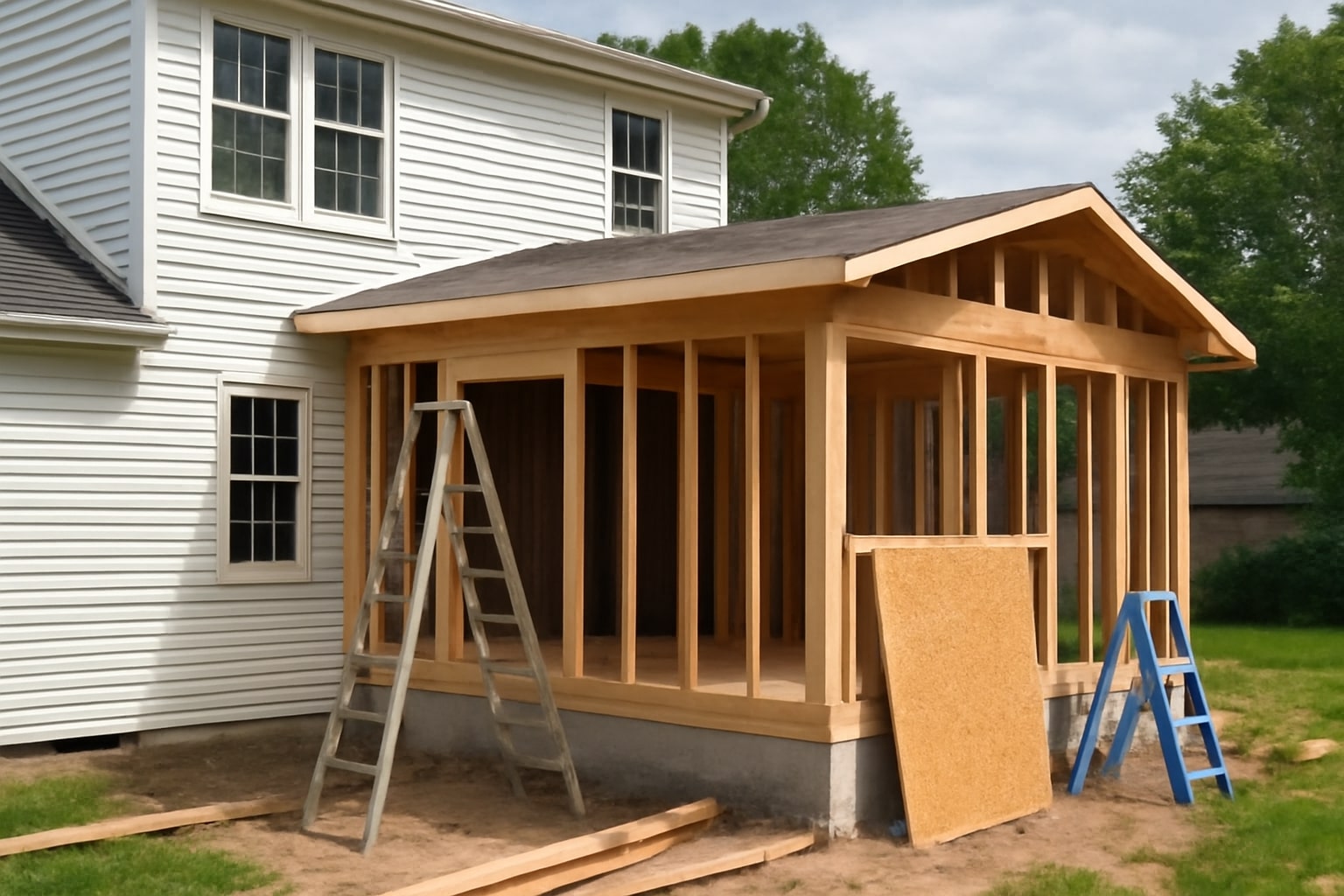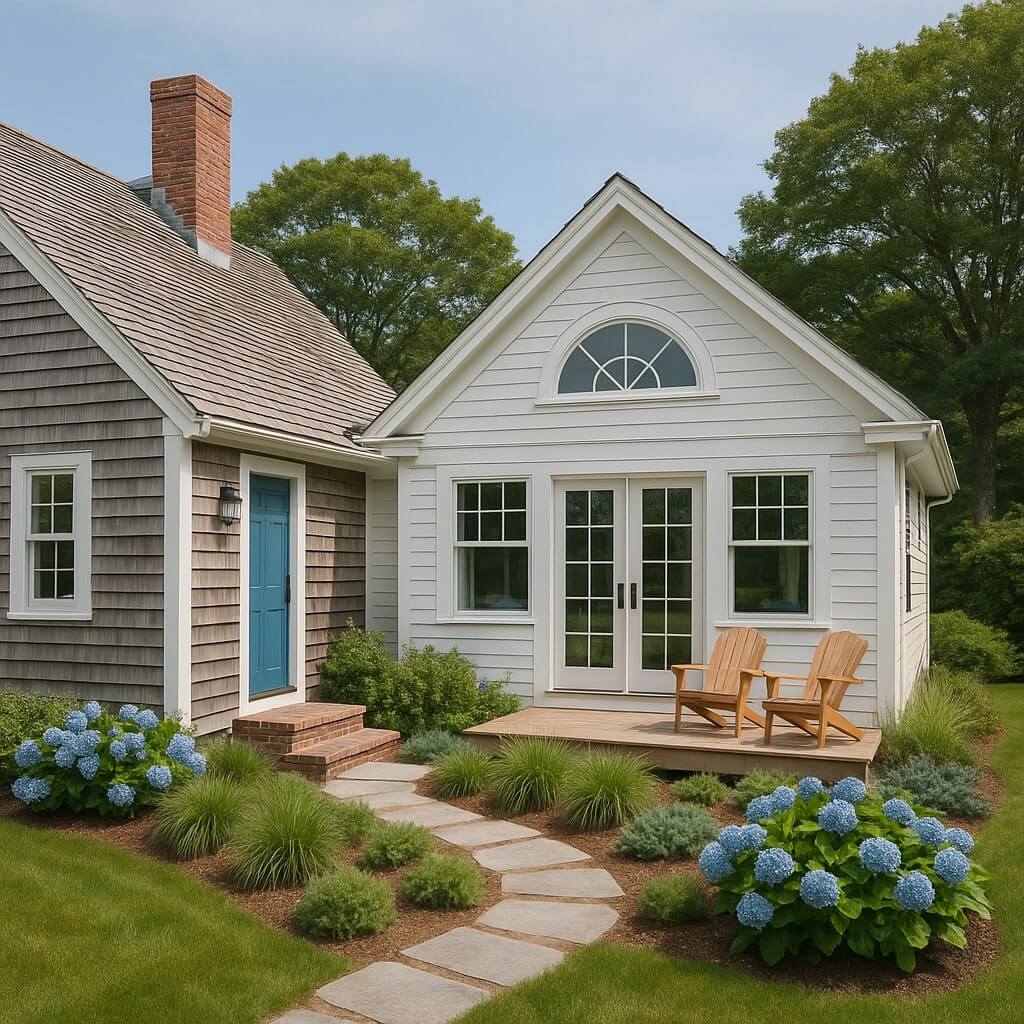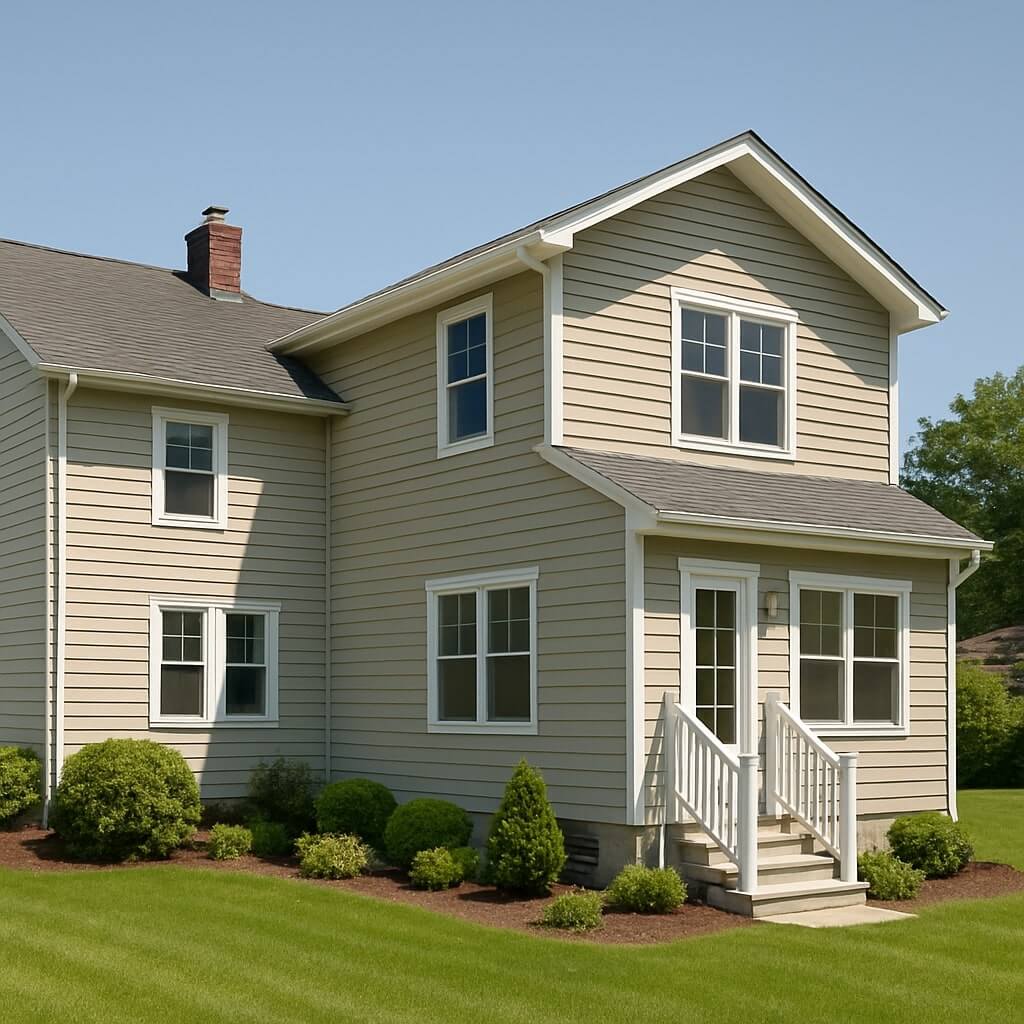When considering a home addition, understanding the various factors that influence architect costs is essential. You’ll find that project complexity, size, and the architect’s experience play significant roles in determining fees. Additionally, geographic location and compliance with local regulations can further affect your budget. As you assess these elements, you’ll begin to see how each one interconnects and influences the overall cost structure of your project. What other factors should you keep in mind?
Key Takeaways
- High design complexity, including unique features and intricate layouts, significantly increases architect fees and project timelines.
- The size of the addition directly affects costs, with larger projects requiring more materials and resources.
- An architect’s experience and reputation can lead to varying fees, with established professionals often charging premium rates for their expertise.
- Geographic location influences labor and material costs, with urban areas generally experiencing higher rates due to demand.
- Compliance with local permits and regulations can add to project complexity and costs, requiring careful planning and adherence to building codes.
Project Complexity
When considering a home addition, the complexity of your project greatly influences the overall architect costs. High design complexity often entails intricate layouts, unique architectural features, or compliance with local zoning laws. These factors require more time and expertise, driving up costs.
Additionally, structural challenges, such as integrating with existing foundations or addressing load-bearing elements, necessitate careful planning and specialized skills. Architects must conduct thorough assessments, impacting both the timeline and budget.
Consequently, understanding how these complexities interact can help you anticipate architectural fees, ensuring you allocate sufficient resources for a successful home addition project.
Size of the Addition
The size of your home addition plays a critical role in determining architect costs. Larger additions require more extensive dimensions considerations, impacting both design complexity and material selection.
You’ll need to assess functionality requirements—how you plan to use the space can dictate the necessary layout and structural elements. For instance, a simple extension may involve fewer costs compared to a multi-room addition with intricate details.
Each square foot can considerably affect the overall budget, making it essential to balance your size aspirations with practical needs. Ultimately, a clear understanding of these factors helps you make informed decisions for your project.
Architect’s Experience and Reputation
While you may focus on the aesthetic aspects of your home addition, the architect’s experience and reputation greatly influence the overall project cost.
An architect with a diverse portfolio demonstrates adaptability and skill across various styles and challenges, which can justify higher fees. Their established reputation often reflects a track record of successful projects, ensuring reliable execution and innovative solutions.
An architect’s diverse portfolio and strong reputation can justify higher fees, ensuring innovative solutions and successful project execution.
Additionally, client testimonials play a significant role; positive feedback not only validates an architect’s expertise but can also indicate their ability to manage budgets effectively.
Ultimately, investing in a reputable architect can save you time and money in the long run.
Geographic Location
Your geographic location greatly influences architect costs for home additions, particularly when comparing urban and rural areas.
In urban settings, higher demand often drives local market rates up, while rural areas might offer more competitive pricing due to lower demand.
Understanding these dynamics helps you budget effectively and select the right architect for your project.
Urban vs. Rural Areas
When considering architect costs for a home addition, geographic location plays an essential role that can greatly affect your budget. Urban areas often demand higher fees due to complexities in urban architecture, regulations, and material costs.
In contrast, rural design may offer lower costs but could present challenges like accessibility and fewer local resources. Understanding these dynamics helps you plan effectively.
- Higher demand in urban areas
- Complex regulations and permits
- Limited availability of construction materials
- Accessibility challenges in rural locations
- Differences in labor costs
Evaluating these factors can profoundly influence your overall project expenditure.
Local Market Rates
Local market rates for architect services vary considerably based on geographic location, reflecting the economic conditions and demand within specific areas. In high-demand regions, you’ll likely encounter higher fees due to competitive pricing, while less populated areas may offer more affordable options. Understanding these nuances can help you budget effectively.
| Location | Average Rate (per hour) | Local Demand |
|---|---|---|
| Urban Area | $150 | High |
| Suburban Area | $100 | Medium |
| Rural Area | $75 | Low |
| Coastal Cities | $175 | Very High |
| Mountain Regions | $125 | Moderate |
Design Style and Requirements
Understanding the design style and requirements of your home addition is essential, as it directly influences both aesthetic appeal and functionality.
You’ll need to balance modern aesthetics with the functional requirements of your space. Consider the following aspects:
- Architectural cohesion with existing structures
- Desired materials and finishes for durability
- Natural lighting and ventilation needs
- Spatial layout for ideal flow and use
- Integration of sustainable design elements
Permits and Regulations
Once you’ve established the design style and requirements for your home addition, you must navigate the maze of permits and regulations that govern construction projects.
Understanding local building codes is essential; these codes dictate safety, structural integrity, and energy efficiency standards.
Understanding local building codes is crucial for ensuring safety, structural integrity, and energy efficiency in your home addition.
Additionally, zoning laws affect how your addition can be built—regulating aspects like height, setbacks, and land use.
Failing to comply with these regulations can lead to costly delays or fines.
Engaging with local authorities early on guarantees you meet all necessary requirements, potentially saving you time and money during the construction phase.
Timeline and Scheduling
When planning your home addition, understanding the project duration is essential, as it directly affects costs and resource allocation.
Seasonal considerations also play a significant role; certain times of the year can either expedite or delay construction due to weather conditions.
Project Duration Impact
Although project duration can vary greatly based on several factors, effective timeline management is essential for a successful home addition.
To optimize your project, consider these key elements:
- Clear project milestones to track progress
- Accurate time estimates for each phase
- Coordination among contractors and suppliers
- Regular updates to adjust schedules as needed
- Contingency plans for unforeseen delays
Seasonal Considerations
Seasonal factors greatly influence the timeline and scheduling of your home addition project.
Weather impacts, such as rain and snow, can delay construction, affecting labor availability and material delivery.
Seasonal trends also dictate the best times for certain tasks; for instance, spring and summer are ideal for outdoor work, while winter can hinder progress.
If you plan your project during peak construction seasons, you may face higher architect costs due to increased demand.
Understanding these seasonal variations allows you to better schedule your project, potentially reducing costs and ensuring your home addition is completed efficiently.
Additional Services and Support
While planning a home addition, it’s crucial to contemplate the additional services and support that architects can provide beyond basic design.
These offerings can enhance your project through effective client communication and foster collaborative partnerships.
- Feasibility studies to analyze project viability
- Coordination with contractors and engineers
- Permit acquisition and regulatory compliance
- Interior design services for cohesive aesthetics
- Project management to guarantee timelines and budgets
Understanding these services can help you make informed decisions, guaranteeing that your home addition aligns with your vision while optimizing costs and efficiency.
Conclusion
In conclusion, understanding the factors that influence architect costs for your home addition is essential for effective budgeting. Project complexity, size, and the architect’s experience greatly affect fees, while geographic location and design requirements play pivotal roles. Additionally, steering through permits and regulations can add to your expenses. By considering these elements, you can make informed decisions and guarantee your project aligns with both your vision and financial expectations, ultimately leading to a successful addition.
